After a disastrous experience with my first ever drone, the GoPro Karma, I was reluctant to try any new ones, but I ended up buying the Mavic Pro, all the way back in 2016 and I have to say that after experiencing what it is capable of, not only did it set in motion what would become my entry hobby into the drone world, but it also propelled me to make this website too.
The Mavic Pro became my favorite drone instantly, and in spite of having it for over 5 years since I first got it and also getting 5 other models, some of which ARE superior to it, I still keep this drone around, because it is still a viable drone model to own to this day (2021) and beyond.
Here are the other drone models I’ve gotten ever since I purchased a Mavic Pro:
Despite having these other models, some of which are arguably better than the original Mavic Pro, I still keep and use my original Mavic and for good reasons! The perks this drone has are what today’s high end models are mimicking. And that’s really one of the main points I want to get across. If you’re on a tight budget, and see these other drone models on the market but the Mavic Pro is within your budget, I still recommend getting it.
Stats and info on the Mavic Pro 1:
Name: Mavic Pro.
Company: DJI.
Typical flight time: 20-25 minutes per battery.
Range: 7-8 KM (4-5 miles).
Size: Without the wings/propellers, it’s a little bit bigger than the palm of an adult hand.
Price: $800+ for just the remote/drone. Combo package is $1,000 and I strongly recommend that one as it includes money saving extras.
Camera quality: 12 MP, shoots in 4K. Honestly it’s amazing footage in my opinion.
Rating of product: 80 out of 100 points. One of the most recommended drone I’ve reviewed so far. It’s fantastic, has an overwhelming amount of positive perks but I will also list a few honest cons about it. Get it here.
Update: Mavic Pro 2 released. Here’s what you need to know:
I got myself ones and still keep my original, but the Mavic 2 Pro is now my #1 recommended drone. Click here for a full Mavic 2 Pro review and details on this drone. Currently, I have restructured my recommendation list. Like I said before, the Mavic Pro is still HIGHLY recommended, but while it was once the TOP drone on my list, it is now fourth.
Here’s a updated list of the best drones:
While this drone is currently at the top of my list, there’s others worth considering. Here’s #2:
And #3 would be the Autel Evo 2 Pro, and if you want a DJI recommendation, then the Mavic Air 2 would be the next best option. Now while I listed these other 2 above it, they are not that much above it, you’re still getting a TOP of the line level drone in the original Mavic, so just know this.
My history and initial thoughts the Mavic Pro 1 (5 years ago):
The first time I ever heard about it was from a Casey Neistat video where he reviewed it. On a few occasions he mentioned that it’s his favorite one too because of it’s portability and shooting abilities and I would have to agree with him in hindsight. And this is a guy who has many different drones, high end cameras and knows much more than I do about filming, shooting photos and making videos.
Although I first heard about it from him, I didn’t buy it until way later, after I had a bad experiences with a different drone (GoPro Karma) and was reluctant to make another big purchase.
But in any case, after I looked at both Casey’s experiences and did a lot of browsing/research from other people, the choice was pretty clear in that almost unanimously, people agreed that this is a great, high quality drone.
And so I purchased it. Here she is (I still gush over it):
The very same day I got it, I took it to a park and invited my grandfather who loves anything technology related to come with me.
I unfolded it, set it up as instructed, and flew it in beginner mode. Both of us were amazed because this was our first experience with it.
From that point, we continued to go out, visit different places with it and shoot mainly videos.
I also went on several road trips, took it with me and captured some amazing photos of mountains, flying over streams and in some very tight places.
This drone has helped me capture incredible footage I never imagined being able to do. And thanks to this drone’s ability to fly safely, to be a portable option to take with me and having an incredible camera (despite all of the new drones out today), it’s opened up a lot of new passions for me in life, including taking awesome nature photos and building a blog on it.
That blog is called TheNatureSeeker.com and some of the footage I share there does come from the Mavic Pro 1, but most of it has recently come from the Mavic 2 Pro.
Anyway, the point is that this drone opened a lot of doors to me in life and through my imagination and this is what I am most thankful for.
Sample footage I captured on the Mavic Pro 1:
Though the flights were risky because the areas were “tight” in space, I am happy to report that the drone is (so far, phew) safe and the footage was WELL worth capturing.
I typically like to film nature and here are some of the images this beauty picked up:
I took that image from a place I visited in Vermont and when I saw how far the river went and how cool it would be to shoot a shot over the water as the stream was coming towards the drone, I had to fly it and film it.
I definitely had some near crash experiences with this drone, but thankfully, I’ve been keeping it safe for the years I’ve had it. I do admit that nearly all of the near crashes I had were due to my risk taking behavior with this drone and flying it in areas like the one you see to the right.
The most difficult thing to spot with this drone is branches and wires and experience has taught me to look out for these most of the time.
Here’s another photo I took (straight out of the camera):
This was shot during a hike I did in the Catskill Mountains and while the image is compressed a lot, I can tell you the original is very detailed and still holds strong against the other cameras top level drones have to this day.
You can certainly edit the footage, but for me, I like the default photos and video this drone takes, although I do know about how to set the Mavic Pro’s camera settings to look even better and I provided a link to that post where you can do the same if you want (no raw shooting or post editing required).
In the years that I’ve used this drone, we have had many close calls and many awesome adventures, and it’s one of the reasons why even today, even though I don’t use it much anymore due to the other models taking over, I still keep it and have a hard time considering selling it through options like the DJI Trade Up program or just selling it to someone.
It just has so much nostalgia for me that I’d feel pretty bad giving that away.
Looking past the initial “dronemance” with the Mavic Pro 1:
After I first got the Mavic Pro 1, I was crazy about it and overtime, as I learned more about how to use it, the experiences I had from flying it, I learned a lot and have been amazed as to it’s capabilities, which there are many off (listed below).
However, as I said, I am doing an unbiased review here, so I will list some of the things I am not a big fan of when it comes to the Mavic, but first, I have to address the MANY pros I have come to conclude about it based off the many flights I’ve done so far:
The Mavic’s many pros and few cons:
1) Portability.
Before the Mavic Pro came around, any of the existing high end drone did not have much portability. They were typically huge (Phantom, Yuneec Typhoon H), could not be folded and needed to be carried with large backpacks.
This added a lot of weight to people’s backs who needed to do things like go hiking and reach a high point to start shooting. In addition to that, the set up of these large things was also a pain. You would have to do a checklist of things before you could fly (propellers, guards, firmware checkups, ect…). This added extra weight and time on your experience.
Though you did get good footage in the end, it came at the expense of a lot of physical efforts in carrying it. However, that all changed with the Mavic.
Because it folds up, is pretty small and light, suddenly those huge backpacks are no longer necessary. You can stuff this thing in a regular backpack or in my case a small briefcase I purchased for it. You don’t really feel the weight.
Here’s an image of how big my hand is next to it. It’s literally about the same size:
Furthermore, the propellers are already attached to the wings as you can see which means there’s less time needed to set things up. Normally taking out this thing from it’s case and setting it up takes less than a minute for me. Afterwards, when I’m done filming, I fly it back, land it on my hand, fold it up, then proceed to go to my next destination.
When it comes to portability and drones, the Mavic is the original KING. Now that we have another one called the Spark out, this portability is being copied over to other models, but if you want great footage and portability, the Mavic is still the best one to buy.
2) Camera and video quality.
I’ve owned some decent phones with OK cameras and I never considered myself a professional photographer. To me the whole thing about buying expensive lenses wasn’t something to worry about and I didn’t even know what 4k meant before I got the Mavic.
Then I looked at the video footage being produced by this drone (which can shoot in 4k), as well as the photos it was taking and that all changed, very suddenly in fact.
I started looking at wonder at how such a little thing, with such a small camera could produce such amazing imagery and video and to this day, I am still stunned by it, despite my ever growing experience with drones and the other models I’ve gotten since.
In fact, I am not the only one who thinks this when they first see the footage of the Mavic. Again, have a look at one of my favorite photos taken by it:
Tell me that’s not amazing!
Do note, that the quality of the pictures you see are from the DEFAULT picture/video settings on the Mavic. You can TOTALLY adjust this stuff if you wish (here is a manual guide I use). I personally like to keep it on the default settings because I am not too keen on how picture/video editing works and I think the existing footage is good enough for me until I can figure it out better.
I’ve had a few people and kids look at the footage and be floored by it’s quality and these are people who typically own iPhones and other high end phones that have some superb cameras on their own. Yet when they see the footage the Mavic produces, they are amazed. That says something about this product.
Now granted, the footage isn’t DLSR quality (a very, very high quality camera) or the type of footage you’d see on something like the Inspire Drone, but I’ve got to tell you, doing a side by side comparison, the difference is not easy to spot and when you’re comparing Mavic’s picture/video taking ability to the most high end cameras on the market today, you’d find little differences between them unless you really look hard, that’s my personal opinion.
3) Many intelligent flight modes:
There’s 12 technically, but if you include the regular flight mode, beginner and sport mode, there’s 15, but those are self explanatory, here are the specific 12:
Active track: This product will track any object you tell it to, be it yourself, a car, a moving object, ect… and will follow it while avoiding obstacles.
Gesture: The drone is in the air, you put up your hands, make a gesture and it takes a picture. This can happen hands free, meaning you will not need the remote to use this.
Way points. You can have this thing go to 3 different locations, record those as way points, then have it automatically fly around those points on it’s own.
Point of interest. Imagine yourself sitting a top a mountain. There is gorgeous scenery all around you, but you want the drone to show you in the middle of the video, circle around you and capture the scenery. This is where point of interest becomes awesome.
You can have it set to use you at a “center point” and then circle around that point. Now it can also be an object if you want.
Terrain follow. This is a form of active track, but in a different circumstance. Imagine you’re going up a hill and want the drone to follow you. Naturally, as you walk higher and higher, if it follows you in a straight line, it will get closer and closer to the ground. Luckily, thanks to terrain follow, it will not crash into it and will keep staying in the air away from the land.
Home lock. It’s basically like point of interest, but the point itself is the home location set by the drone before it takes off.
Follow me. I don’t know why DJI made this mode when you already have active track. It basically does the same thing, although active track in my experience appears to be superior and easier to use.
Course lock. The product is set to fly in a particular line, but at it does, you can regulate the turn of it, WHILE it stays on the line of flight. I’d say this is a GREAT way to film yourself doing things like riding a car, bicycle riding, running, ect… as it adds an action type of footage to your activity.
Tap to fly. If you’re someone who doesn’t fly well and wants to capture slow, steady footage of an object or have the drone fly somewhere specific, tap to fly is the mode you need. Let’s say I am at a lake, see an island or mountain in the distance and want to capture a beautiful, slow, steady flight to it. I can select the island or mountain as the target and have the drone fly there on it’s own.
Wing mode. The Mavic turns into basically a plane and operates like one swaying left and right when it flies forward. If you’ve ever played a game like flight simulator and had a first person view of the cockpit, this is what it feels like to fly this drone in this mode (just with way better images and video).
Tripod. It’ll fly VERY slow and allow you to take slower videos and pictures. Tripod mode in my experience is best to use in very tight spaces where flying around like crazy is super risky.
I have personally not mastered all of them because I haven’t had the occasion to test all the possibilities, but I do love the options.
4) Crazy range! Up to 7 kilometers.
I will admit I didn’t test this personally, but when I said earlier I was doing research on the Mavic, one of the things I was looking at was the range. Some tests showed the Mavic hitting several miles in range, another went as far as 6+ miles which is well over 8 kilometers.
In short, this thing is without a doubt one of the best for distance flying, provided you’re in the right altitude and conditions permit you to do this.
Update: I’ve done range tests with the Mavic Pro, but in areas where there’s not much open space. With the exception of the Mavic Pro 2, the original MP 1 flies the furthest out of any drone I’ve ever tried. You can easily get several kilometers out of it in interference areas and way over 5 kilometers in open areas.
This is one of the best drones to rely on for connectivity and assurance the connection between you and the model remains clear. This is thanks to it’s “ocusync” technology.
5) Amazing stability/precision.
Out of the 5 drones I’ve tested so far with the wind and just staying up in the air in general, I would say the Mavic takes the win in addition to the MP 2. It’s small yes, YET I have on several occasions took it outside when winds were hitting 15-20 mph, thinking there’s no way I’d be able to fly this thing, yet when it took off and I just let it stay in the air, it almost didn’t move from it’s original position.
As for precision, the home point lock is as phenomenal as ever on this thing as it is on others (Phantom, Spark, ect…) meaning if you lose connection, fear not, it’ll come back to you (provided you set the return altitude high enough to avoid obstacles like trees and buildings in it’s way), otherwise you risk fly aways.
6) It’s pretty quiet.
I like a quiet drone. I don’t like annoying people or loud noises in general, so this thing is perfect for that. In addition, there are currently low noise props being sold for this model, which I got and YES it is way quieter and even more so, their difference in look actually gets the Mavic Pro an extra minute of flight time.
7) Hard to spot.
In addition to being pretty quiet, because this thing is gray in it’s base color (there are skins available), it is VERY hard to spot so if you’re worried about people stopping by and giving you and your drone unneeded attention, it’ll be very difficult for them to do it if you’re flying the Mavic.
I will never forget how on a recent trip I took, I was standing on a bridge flying it over a river and even when it was literally 13 meters away from me, and just a little bit above the water, I still couldn’t spot it. I could see the water moving from the wind caused by the propellers, but I could not spot the drone no matter how hard I tried.
Now if I was looking for this thing and couldn’t find it, I doubt anyone who ISN’T looking for it, whose looking for trouble will spot it. Of course, you should NEVER use this thing to spy on others or do any other unethical/illegal practices. I’m just saying this thing has less chances of getting attention and attracting crowds, which I personally love.
So many times, I’ve sat near a road and had the drone in front of me and had cars pass by me without realizing what I was doing. Had I been flying a bigger drone, it would have been easier to see for these people.
8) Great flight time.
- If you keep it in the air and don’t move it, I swear, this thing can get over 40 minutes easy.
- If you fly it on normal mode, you’ll get over 20 minutes.
- If you fly it on sport mode, maybe 15 minutes.
In any case, there is plenty of flight time and entertainment available on just one battery.
9) Perfect for flying through tough areas.
Flying in an open field is easy, but I like to challenge myself and fly in areas where footage is harder to get and those flights typically are more dangerous for the drone because it can quite easily hit something and fall.
I love to film waterfalls, lakes, nature, mountains, ect… and here are some of the risky places I’ve filmed at:
I’ve flown on top of river beds with trees right above it. The space between the water and trees was about 10 feet.
I’ve flown through “caverns” that were very narrow in width.
I’ve flown through trees, underneath bridges and overall tight spaces that bigger drones would be nearly impossible to fly with, through those same areas.
Yet with the Mavic, it is possible and at the same time, I can still capture fantastic footage. Have a look at this one. Although the “tightness” here isn’t much, I would be hesitant to fly a bigger drone through here. Yet with the Mavic, I can risk more in places like these and tighter:
10) Easy to catch and fly off your hand.
I would practice this first, but in my cases, I often don’t have the convenience of finding a flat area to have the Mavic fly from, so I often resort to holding it in my hand and having it take off there, as well as land there.
With the size of the Mavic, it’s pretty easy to do this, though be VERY careful not to bend your hand too much, because you then risk having the propellers hit your fingers which did happen to me once.
11) Great sensors.
Despite having sensors only in the front and bottom, they function quite well. I’ve had moments where I tried to fly in between a hill right a bridge right above it and the Mavic would NOT do it.
Whenever I came close, the “air brakes” would activate and it would push back to avoid the obstacle.
I’ve also seen videos of this thing completely stop when flying at full speed (which can be 20-35 mph), when a bird flew in front of it.
This is a great safety mechanism that DJI made and I love it.
12) You can adjust the controls, the battery, the sensitivity, the camera, ect…
As I said earlier, I love the default footage, but if you’re really good at editing photos, you will love the extra ability to edit the imagery/video on this thing.
This feature is only available on the highest end drones and luckily the Mavic fits into that class. You can change the control sensitivity so it can be a more comfortable flight. You can adjust when the battery should discharged as well as track when it loses it’s juice (or lifespan).
In short, there is a lot of customization available for flights, the camera settings and much more to play around with.
13) I’ve seen the Mavic recover after being in water:
For whatever reason, the persons/s who put up the YouTube videos I saw, crashed their Mavic in a lake or river, it was there from several hours to days. Yet in both those cases, the Mavic was recovered, put in rice to drain the water and still was able to fly fine afterward:
Obviously the Mavic is NOT waterproof and you should NOT play around with this, but the fact that I have seen this happen multiple times speaks to how amazing the technology and durability of this thing is. Here’s info on recovering drones that were in water and what to do if it happens.
Note: It’s VERY hard to crash this thing in my experience because there’s so many safety precautions in place and unless you turn them all off and fly in atti mode, it is pretty safe to fly this thing. Of course, you should be smart enough to not fly near people or places where you annoy people.
14) There is stunning imagery you can capture that would otherwise be dangerous with other models.
When I said this thing has portability, I didn’t mean just in regards to carrying it around. Because it’s so small, I can capture incredible footage in tight spaces that would otherwise be difficult, risky and likely impossible. For example:
The space here is about 5 feet wide and when you’re relying on the screen to measure the distance of the rock walls, it feels like they are inches away from you.
I made this type of fly through several times with the Mavic. Had it been a larger drone like the Phantom, it’s sensors would have been going crazy within that same space as would my heart.
Frankly, I would never risk such a shot with a Phantom or any large drone and that’s where the Mavic again stands out. While I don’t recommend beginner fliers risk such dangerous shots, the fact is, some places that you’ll want to film in require that risk and by doing it with the Mavic, you maximize the odds that you’ll actually do it (smaller drone = more ability to fly through these types of tight spaces).
I’ve flown through numerous places like this with the Mavic and others that would frankly be impossible to do with the larger models and while my heart did beat like crazy, I did manage to get the shot and was very satisfied with the footage I would later see.
The bottom line is, with the Mavic, you can risk taking more risky shots and that can often lead to some of the best footage you’ll ever capture.
Cons:
Ok, now that we covered the MAIN pros, I do have to admit to a few cons I noticed:
1) I am not a fan of the “rope” they made for 2 of the wings.
Though the wings are all unfoldable and portable, the front 2 wings have a “rope” tied to it which regulates the unfolding. From what I have heard, this thing can be used up to 5,000 times before it loses it’s grip.
Now I ran the numbers for myself and came to the conclusion that I could fly and unfold this thing for years to come, at least 5 years, but it just doesn’t make sense to me why DJI would do this. Was it really that difficult to make the unfolding mechanism the same for the front wings as it is back wings (which don’t have the rope) ?
2) I would prefer there be an option to auto enhance images.
While the footage is great, do note that sometimes you have to hit the screen to have it focus on all the details and bring out the potential of the camera. Again I don’t know why DJI did this. I don’t mind tapping the screen to enhance the image and get the better photo/video, but sometimes you can forget this.
Update: Omit this con, there is a function to let it auto enhance, it’s within the camera settings you can check out on your phone once it’s connected to the remote/drone.
3) I hope they add more sensors, to the sides that is.
Right now the only drone which as side sensors is the Phantom 4 Pro and Inspire 2. Everything else, even at it’s highest end has sensors on the front and bottom and as I said, I like to fly in tight spaces and often I cannot see the distance on the sides. But this is for me, someone who likes to fly in tough spots.
Note: The Mavic Pro 2 has up to 6 sensors working. Learn more here.
My review and conclusion on the Mavic Pro 1 (still an awesome drone in 2021):
As far as the market for drones goes in 2018, this is right up there, possibly even one of the best, depending on what you’re looking to get out of it.
I own the Phantom 4 Pro and the Spark, as well as others (and will get more DJI products in the future), but the Mavic is amazing and I have honestly yet to see a single review, website or YouTube video which disagrees with this.
I think if you were to take something like the Phantom 4 Pro, Inspire, Mavic, ect… and compare them to cars, you’d be comparing:
- A Ferrari (Phantom 4 Pro, NOT the regular Phantom 4, the Mavic is superior to that one in my opinion):
- A Lamborghini (Inspire 1 & 2).
- A very high end Mercedes/BMW (Mavic).
Though the other sports cars (and drones) are expensive and more high end, you’re not exactly a “poor” man driving the high end BMW/Mercedes an the other ones on the market are like Hondas and Toyotas.
They may be OK, but they are not on the level of those 3.
And of course, as new models came out after the Mavic Pro, the numbers changed but never the less, if you told me today, in 2021, that you were buying an original Mavic Pro, you’d get my thumbs up easily.
The only thing is, if you asked me to other alternatives, the closest and better budget option would the Mavic Air 2.
My position and score of the Mavic:
85 out of 100 points. An amazing product hands down. In fact:
When it came out in 2016, I would have said it’s the best consumer drone there is, even better than the Phantom 4 original. But because other drones did come out and were based on it in body and mechanics, the Mavic Pro did fall a bit BUT it is in my opinion a top 5 or even top 10 drone to this day.
My recommendations on if it’s worth buying:
Th answer is yes. Whether you’re a beginner to a professional photographer or flight hobbyist, this thing will make you very happy.
It has a very minor downsides as I expressed above, but honestly, it pales to the excellence of quality, fun and experience you’ll get from it.
I would recommend getting the package that’s available with the Mavic where you get a bunch of other things in addition to the remote control and drone:
I purchased the regular $999 package (it’s cheaper now that the Mavic Pro 2 is out) and ended up buying several other things such as a battery, car charger, a briefcase for it and propellers. I should have spent a few extra hundred and I would have saved a few extra hundred because the package gets you more than if you buy all the other things individually.
I made that same point about the Spark when I wrote my review of it and I would recommend it too. The package is $1,100, but with the extras in the package, you save $200-$300 on that, than if you decided to skip the package, buy the regular drone and the package perks individually and its well worth it.

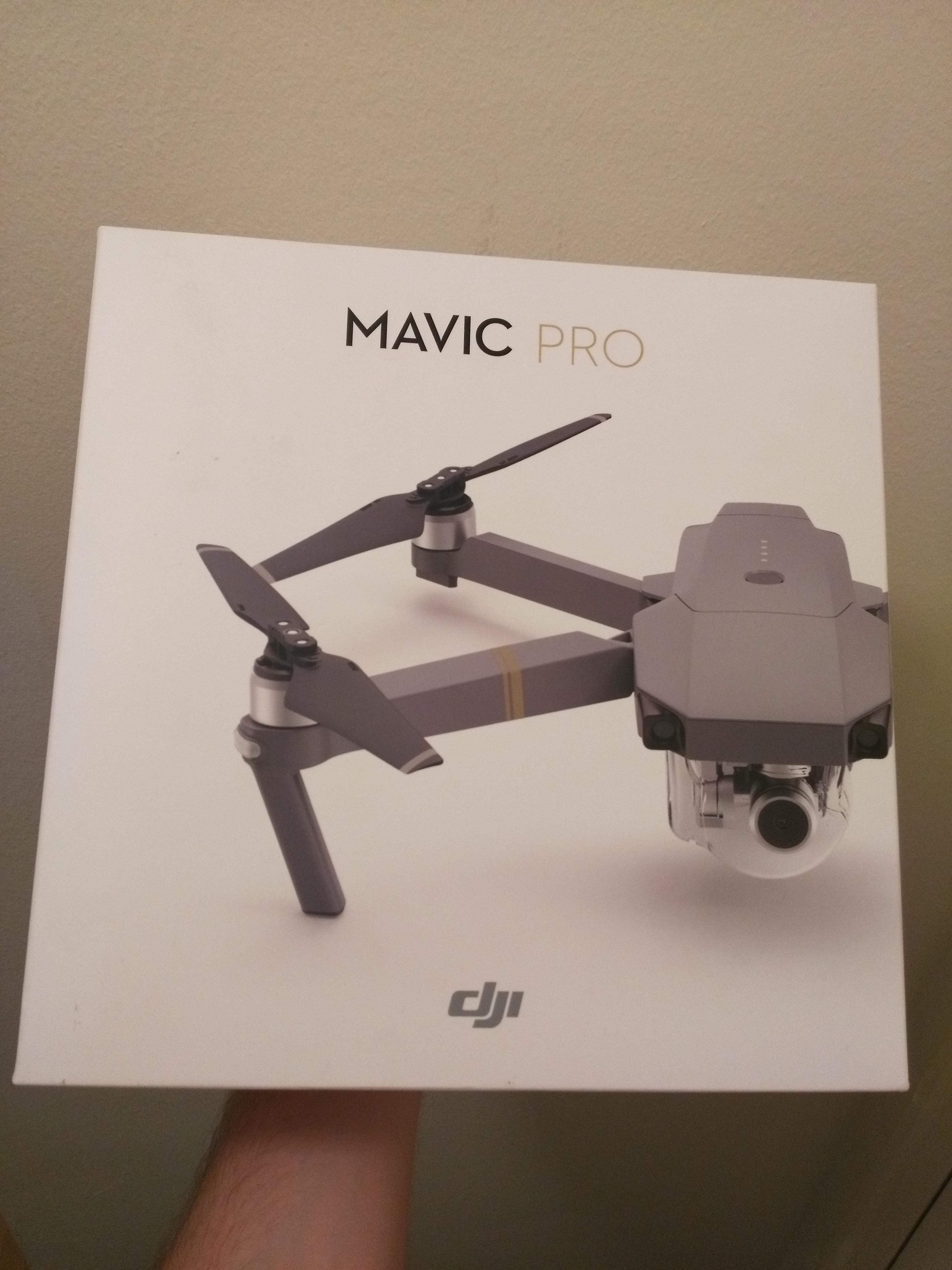
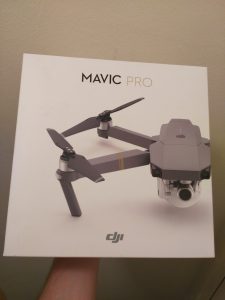
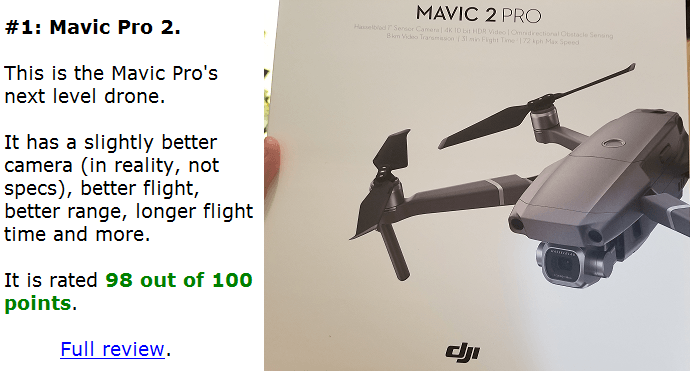
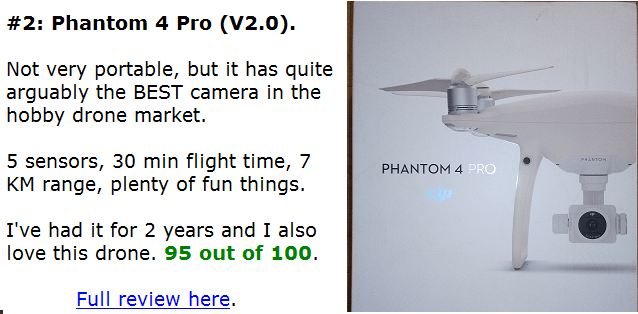



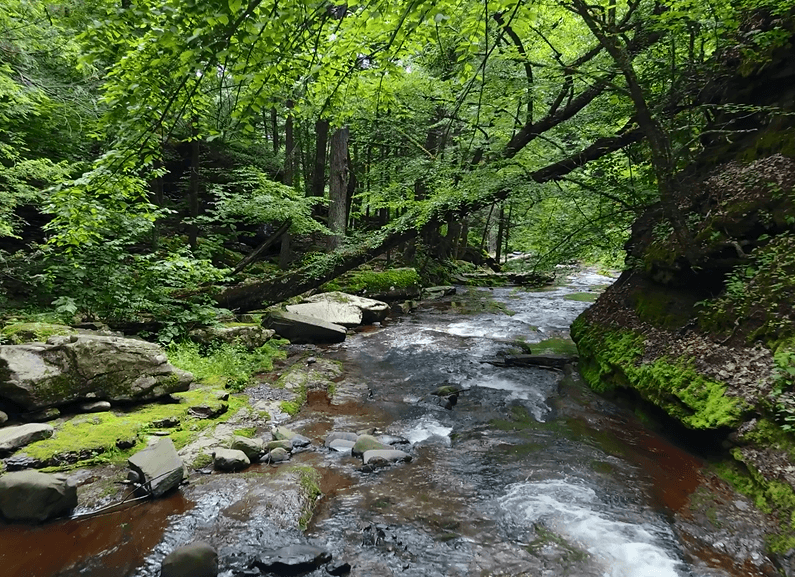



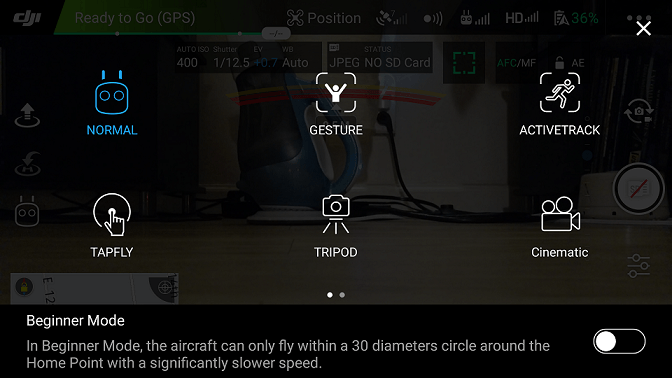
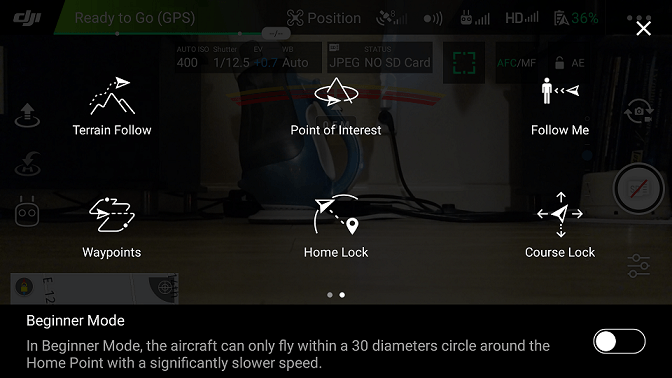


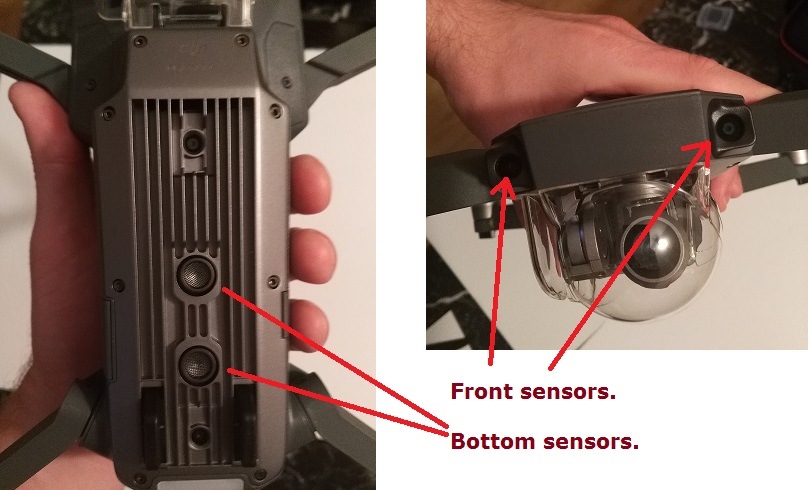
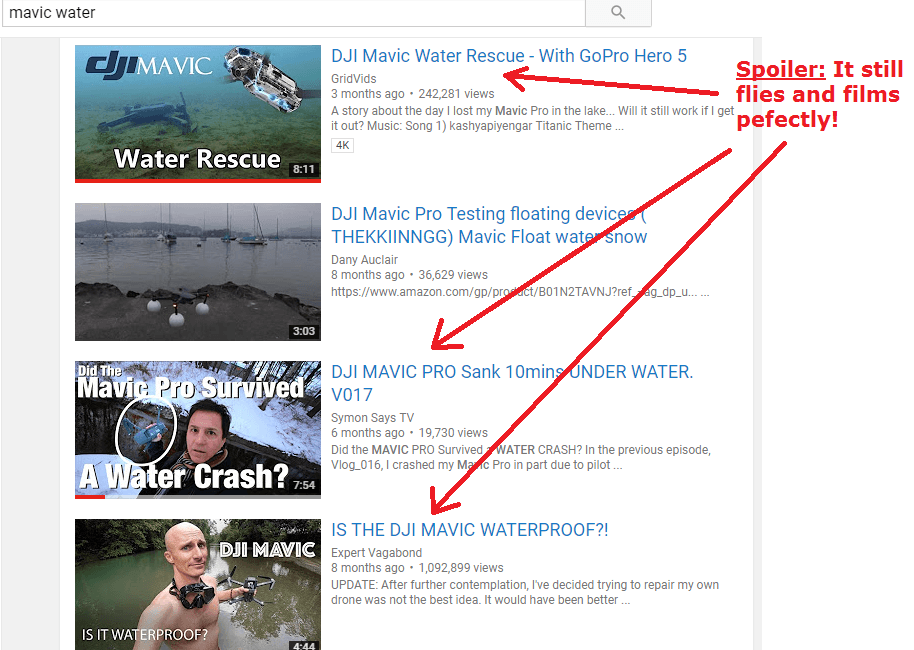
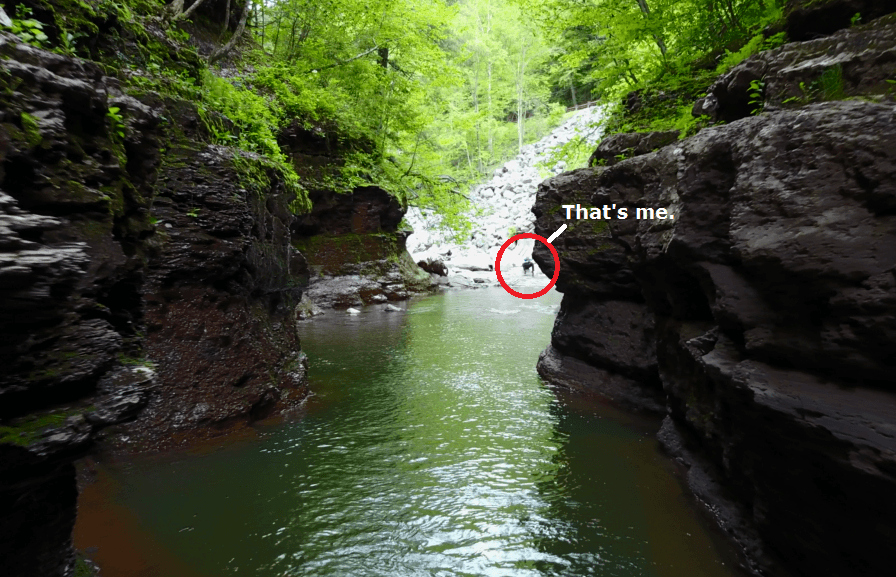


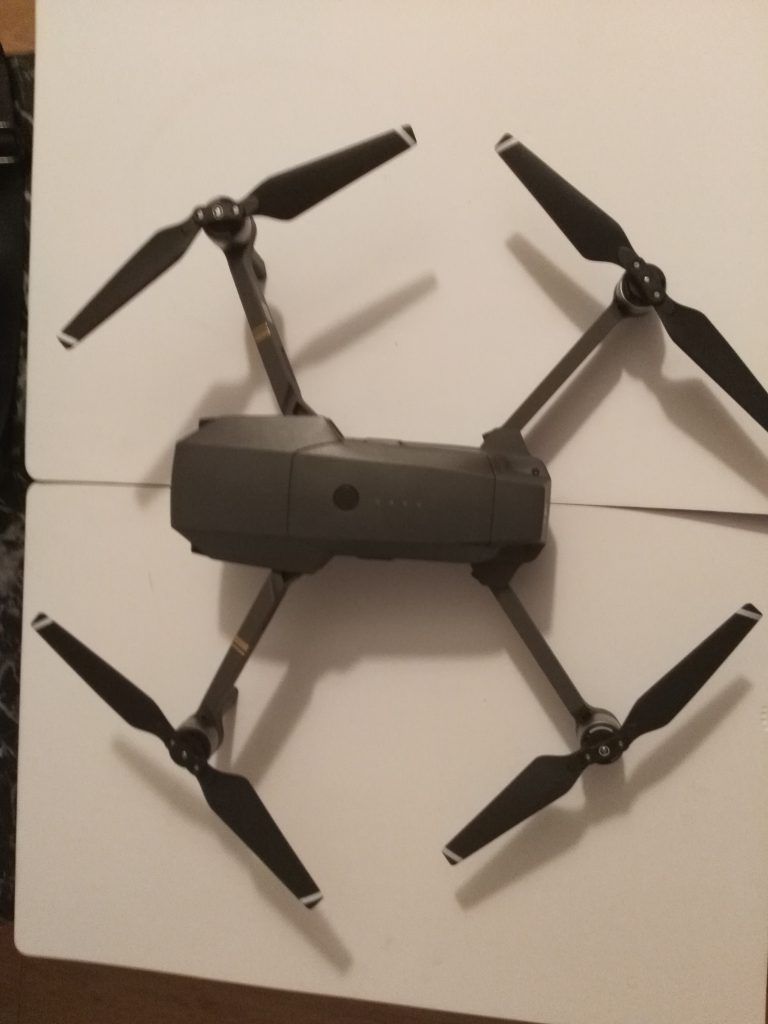

I am very new to the drone scene, and I have recently decided to get into it as a hobby. I can say that I now have a better idea as to why some are so expensive! This bad boy seems to be the whole deal!
However this is out of my budget, can you give me any recommendations to a drone a little more reasonable, but still a good value for the price?
Thanks,
Brendon
The next best options would be the Spark which I also reviewed Brendon and/or the Phantom 3 series, which is around $500 I believe.
My 15 year old son would love to have a drone like this. The picture quality looks great. I love the fact that it folds up so nicely making it very portable and the fact that is has sensors to prevent it from directly crashing into something. My questions are the following: Does it ever get lost? If it goes out of range or loses battery power does it just land itself somewhere and then how do you find it?
Great question! Here’s the beauty of this drone IF these scenarios happen:
1) Should you lose connection, there is an automatic feature which makes it fly back to you, aka the point from where it lifted off from.
2) Should you choose to fly it so far that it doesn’t have enough power to get back, when the battery is around 10% or less, the drone will land itself. Now here you will have to be careful and ensure the place it lands is somewhere flat and safe.
I am also new to the drone world and I have been thinking about buying the Mavic Pro for capturing footage of some big events I want to record in the future.
However, I would hate to crash this nice one while learning the basics of drone flying and recording. Do you have any recommendation for a cheap drone w/camara that can get banged up for beginners?
There’s a lot of beginner drones out there Joshua, the Spark is one of them, among other options. Personally, the question I’d ask is, how much would you like to spend on a drone?
The cheapest ones out there tend to break quite easy so the odds of crashing them is way higher. This one as well as the Spark are set in a way that makes crashing them much harder to do.
A very informative article! There are so many ways a drone can help us, but it is sadly overlooked by fear a lot of the time. There are a lot of hard core haters out there and I think it would benefit those people a lot of they read this article.
Thanks so much for sharing! Keep up the great work!
Drones really can help us out a lot and they are in fact being used to find missing people, helping with wildlife and more.
The photo quality of this drone is superb, can I take pictures as well as video? If it can only fly more or less 20 minutes, how many batteries do I have to take on one trip? Is the power distribute evenly to the drone flying ability and the camera ability, or is there a separate battery? How many pictures can you take for an average 20 minutes flight? Excuse me for being so specific, as I currently own a Canon DSLR but do not have any experience with drones. Thank you.
Hi Jason:
1) Yes, you can take BOTH pictures and videos on this. Sometimes when I am capturing a great video and don’t really want to switch to picture mode to capture a good image, I just take a screenshot from the video and use that as an image.
2) Depending on what type of trip you’re taking, 1-2 batteries is usually good enough for me. If you have a car charger or portable charger with you, you can just switch between batteries and recharge them (cool them down first after use before charging).
3)The battery actually affects the gimbal motion (which regulates the camera movement) and the impact on the battery life from that is VERY small, it’s mainly the propellers and motion you put the drone in which affects how long it’ll fly.
4) You can honestly take 100’s of pictures or however many you can fit into the SD card you’re using (the min is 16 GB’s) as well as the flight time. It would depend if the drone is in motion, if it’s not, but hovering, you can fly it longer and take more pictures.
Based on your answer from the third point, the battery is mainly for the flight capability of the drone? However, if I can take 100 pictures in one go, that is pretty neat. Thank you for your swift reply.
Hi Jason yes, the battery is for the flight, not camera picture capacity. The only relevance they have to each other is how many pictures you would be able to take before the battery fully discharges and the drone has to land.
Awesome review. This is definitely on my shortlist of drones to purchase after seeing on live in action a few weekends ago at an event. I thought “I need that” – so this is a great right up and something that has really made me lean toward this model. It just looks really cool, but more research i think is still needed before a final decision. Thanks!
No problem Chris, this is a huge investment so it’s only natural that you want to research more and take your time with it.
I’ve been doing a lot of looking for a drone and the dji mavic pro continues to be the one I am leaning towards. Great review! I found a few of my questions answered in it and I REALLY like the breakdown of the different flight modes.
I’m an active triathlete and am working on a Vlog where a drone is going to come in handy with several shots I need to get. I see your pictures are above a river. How high off the water were you able to fly it?
My goal is to use the active track to follow me while I am swimming in open water. Do you think it will be able to pick up enough of my body in the water to track properly?
Seriously awesome detail and review. Thanks so much!!
Luke
Hi Luke, I love your vlogging idea and wish you well with it! With regards to the Mavic questions, here is what I can tell you:
In the pictures I took above the water, it was honestly not that high because there were trees right above it, so I had to keep it high enough from the water and at the same time low enough to not hit any branches. If it’s in open water, there’s really no limit other than the 400 feet height limit set by the FAA.
Now in regards to it being able to track and follow you while you swim, that is an excellent question and unfortunately one which I cannot answer with 100% certainty. I would guess that if the water is calm and clear enough, it should be able to. If it’s not, and there’s waves, it may interfere with the connection. There is usually a 10 meter height requirement for the drone to be able to track you.
I would recommend having someone nearby on a boat or on the beach who would control the Mavic try to let it track you and if it doesn’t work to have that person manually follow you with the drone, this may be the better option.
Hello!
I was thinking of purchasing a drone as a Christmas gift for my boyfriend, but there are so many choices out there and I have zero knowledge of the matter. I wish I had stumbled upon your site earlier because your reviews are so detailed and can help even a “drone dummy” like me. 😛
No problem Kate, did you ever end up purchasing a drone for your boyfriend? Was it his first?
I had never owned a drone, and, lately, I have been thinking of buying one. The DJI Mavic Pro is definitely on my list, but is there any cheaper drones with good quality? Not necessarily a top notch quality, but something that won’t die in a matter of months? I don’t want to buy this one and end up crashing it the next day.
Well it won’t crash unless you really, really try. This model has numerous safety mechanisms in place that unless you turn off manually, they’ll keep it safe. I never flew a drone until the Mavic and I was also scared before the first flight, but when I saw how easy it was and how safe it is, I immediately knew I had made a smart purchase.
Now as for cheaper models, honestly, it’s not so much about the price, but the question of quality. Are you looking for a simple drone that will just fly that you can have fun with? Or are you looking for that as well as something that films really well and has good safety in place? If you can answer me these questions, I may be able to suggest a cheaper model that will suite you.